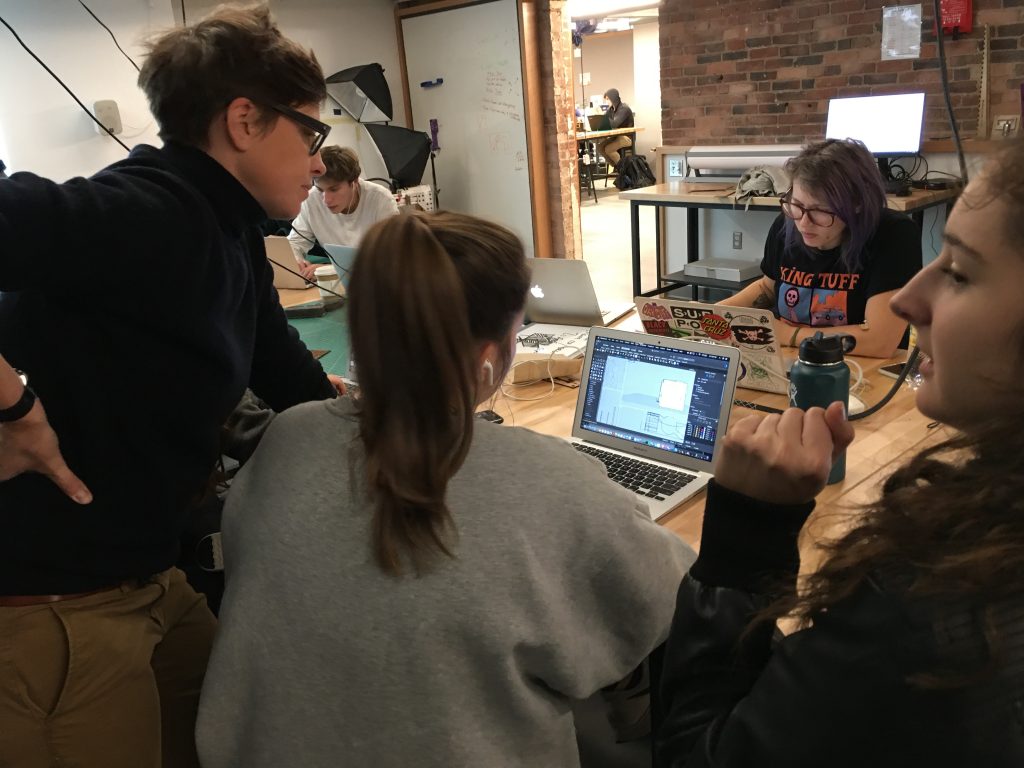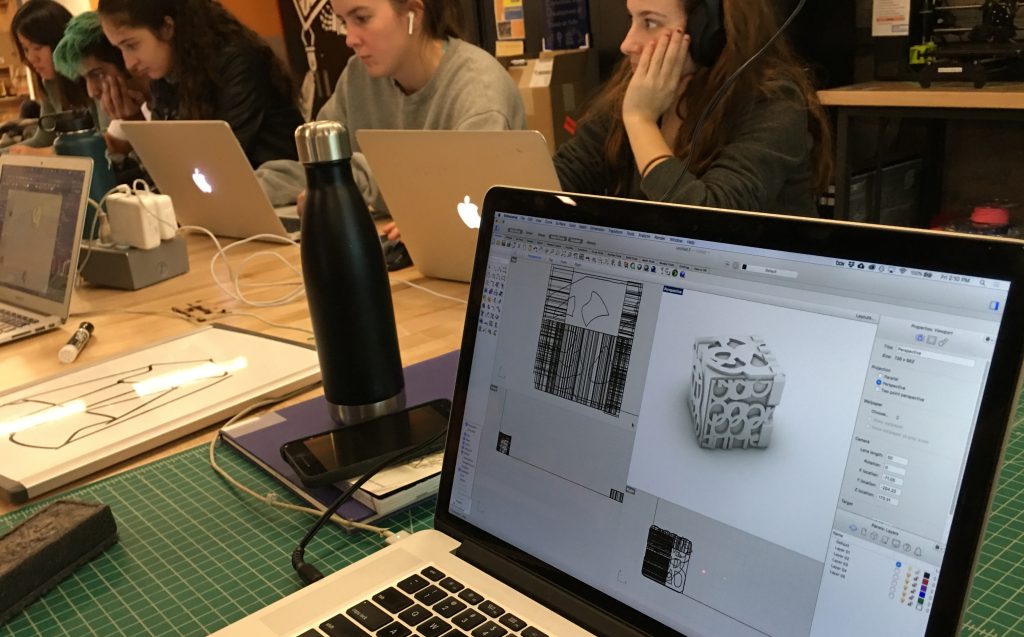
Floor van de Velde is a Professor of the Practice at Tufts’ School of the Museum of Fine Arts, teaching sculpture, installation, sound, and film & video.
On October 11th we visited van de Velde’s Digital Fabrication Lab class—SCP 0103, which she was holding in the Nolop FAST Facility makerspace, located on the first floor of Tufts’ Science and Engineering Complex, and managed by Mechanical Engineering lecturer Brandon Stafford. The course is focused around allowing students to explore hands-on fabrication with a range of tools, while keeping in mind considerations of digital design theory, and contemporary art and craft.
The lesson van de Velde was teaching on the day we visited—Rhino Lesson 3 – Surface Modeling—enables students to experience the fabrication process in its entirety, from concept to object. First she has students sketch a design, which they then recreate in 3D software known as Rhino. Once the models are set up as 3D files, students can send them to one of Nolop’s 3D printers, to create a physical object.

While working on the models students compared notes with each other and discussed their process with van de Velde. A creative constraint which she gave them was that they use the letters of their name to create cube-shaped forms — type set in three dimensions this way is sometimes called dimensional type. Design challenges include anticipating positive and negative spaces in the design, working with symmetry and asymmetry, and positioning the letters to create a form that would hold together when printed.
Other projects van de Velde’s students will be working on this semester include designing forms for carving with a CNC (Computer Numerical Controlled) milling machine, which is useful for cutting out varied shapes in flat, uniform materials such as plywood, acrylic, MDF, and PVC.
Throughout the semester van de Velde has her students use WordPress blogs to document their assignments, so they can reflect on their own processes and share them with other students.